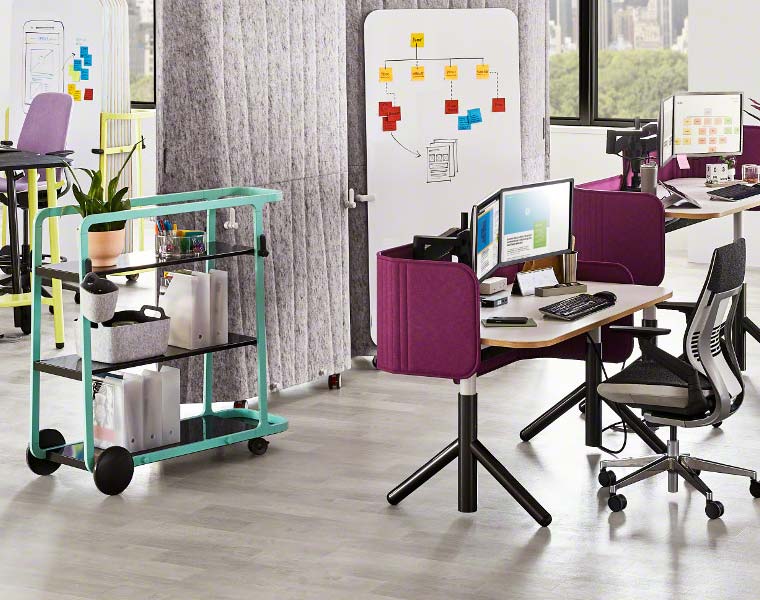As the industry waits with bated breath for the launch of Steelcase’s highly anticipated new Flex collection, we’re exploring the ever-evolving dynamism of workspace design and furniture. The modern office is on the move and there are plenty of benefits for productivity, wellbeing and retention of talent.
Taking things like integrated power, ergonomic furniture and touchdown or transition spaces to the next level, Flex (pictured below) is symbolic of a significant movement in commercial interior design and fit out. People are becoming more mobile, adaptable and flexible than ever before and those responsible for creating today’s working environments need to respond.

As we discussed in our recent article about improving concentration in the workplace, work is no longer a linear process – it’s a whole solar system of what Gloria Mark (Associate Professor at The University of California Donald Bren School of Information and Computer Sciences) calls ‘working spheres’. Employees need to be able to move through these spheres in a nondirectional way and have the right habitat and resource around them for support.
Too many workplaces are still designed in the traditional square-foot-per-person way, structured for linear work, but new types of teamwork are emerging. For example, the age of hyper-collaboration is continuing to gain momentum, which is breaking down the hierarchy as we once knew it and giving rise to more cross-communication and problem-solving across teams and working styles.
Teamwork isn’t a new idea but the ways in which it is manifesting itself are.

Flex symbolises a whole new perspective on office design and configuration – one which makes the space itself as versatile and interchangeable as the nomadic user. The workspace today becomes a shape-shifter which can be readily reconfigured to cater for a diverse range of work modes, from individual focus to a collaborative sprint workshop, for example.
Facilitating these new types of teamwork offers the following advantages:
- Increased productivity and efficiency
- Seamless personalisation of your workspace
- Reduced disruption as people are able to find somewhere suitable to work
- Improved physical and mental wellbeing

The lowdown on Steelcase’s Flex furniture collection
Flex has been designed to help in the creation of dynamic neighbourhoods which people can easily move between, even spontaneously. Where it evolves beyond the activity-based work settings of late is that the furniture and environment become as flexible and transient as the users themselves.
Steelcase experts have applied ‘design thinking’ to the concept to provide products which are “built for teams” and “designed with interconnectivity in mind”. They rightly highlight how today, “nature of work is unpredictable” and that people need to be able to “adapt on demand”.
The collection features moveable desks with directional rollers, space dividers, screens which quickly switch between privacy and modesty mode, whiteboards, storage carts on wheels and various accessories including a range of portable power in partnership with global electronics brand, Anker.
